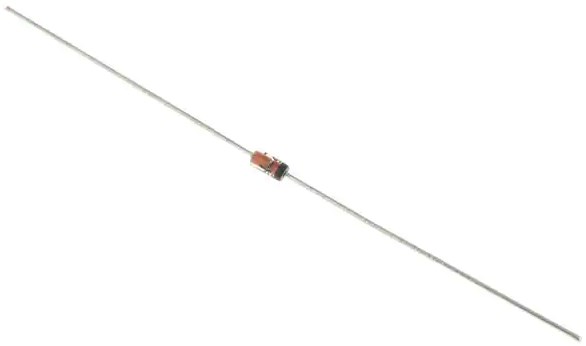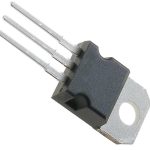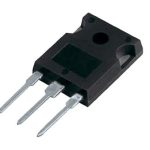The 1N914 diode is a widely used electronic component known for its versatility and reliability. Whether you are a seasoned electronics enthusiast or just starting out, understanding the specifications, features, and frequently asked questions about the 1N914 diode can greatly benefit your projects. In this blog, we will provide a comprehensive overview of this diode, help you make informed decisions.
What is 1N914?
The 1N914 is a small signal diode commonly used in electronic circuits. It belongs to the general-purpose silicon switching diode family. This diode is designed to be used for high-speed switching applications and small-signal detection or rectification purposes.
Features
- Fast Switching Speed: The 1N914 diode has a fast switching speed, which makes it suitable for high-speed applications such as pulse generation, RF applications, and digital circuits.
- Small Size: It comes in a compact package, making it easy to integrate into various circuit designs without occupying much space on the PCB.
- Low Forward Voltage Drop: The forward voltage drop of the 1N914 diode is typically around 0.6 to 0.7 volts. This low voltage drop allows efficient conduction of current when the diode is forward-biased.
- Low Reverse Leakage Current: The 1N914 diode exhibits low reverse leakage current, which means that it allows only a minimal amount of current to flow in the reverse direction when it is reverse-biased.
- High Peak Reverse Voltage: The 1N914 diode has a peak reverse voltage rating of 100 volts, making it suitable for applications where higher voltage tolerance is required.
- Wide Operating Temperature Range: It can operate within a wide temperature range, typically from -65°C to +200°C, ensuring its suitability for a variety of environmental conditions.
- Availability and Cost: The 1N914 diode is widely available and relatively inexpensive, making it a popular choice among hobbyists, students, and professionals alike for various electronic projects and applications.
Specs
| Product Attribute | Attribute Value |
|---|---|
| Onsemi | |
| Product Category | Diodes – General Purpose, Power, Switching |
| Switching Diodes | |
| Through Hole | |
| 100 V | |
| 4 A | |
| 300 mA | |
| Single | |
| 4 ns | |
| 1 V | |
| 5 uA | |
| – 65 C | |
| + 175 C | |
| 1N914 | |
| Bulk | |
| Brand | Onsemi / Fairchild |
| Height | 1.91 mm |
| Length | 4.56 mm |
| Product Type | Diodes – General Purpose, Power, Switching |
| Subcategory | Diodes & Rectifiers |
| Type | Small Signal Switching Diode |
| Reverse Voltage | 100 V |
| Width | 1.91 mm |
| Part # Aliases | 1N914_NL |
PCB symbol and Footprint

Datasheet
You can check the link below to get the document pdf of 1N914 to learn more details about it:
Compare 1N914 With Others
1N914 vs 1N4148
Both the 1N914 and 1N4148 diodes are small signal-switching diodes widely used in electronic circuits. While they share many similarities, there are a few key differences to consider. The 1N914 has a slightly higher forward voltage drop (typically around 0.6V) compared to the 1N4148 (typically around 0.5V).
Additionally, the 1N914 has a higher reverse leakage current of about 25nA, whereas the 1N4148 has a lower reverse leakage current of about 5nA. These differences make the 1N4148 more suitable for low-voltage applications where a lower forward voltage drop and reverse leakage current are desired.
1N914 vs 1N4001
The 1N914 and 1N4001 diodes serve different purposes due to their varying electrical characteristics. The 1N914 is a small signal diode, while the 1N4001 is a general-purpose rectifier diode. The main difference lies in their maximum voltage and current ratings.
The 1N914 has a maximum reverse voltage rating of 75V, making it suitable for low-voltage applications, whereas the 1N4001 has a higher maximum reverse voltage rating of 50V, allowing it to handle higher voltage levels. In terms of current rating, the 1N914 typically has a maximum forward current of 200mA, whereas the 1N4001 can handle higher currents up to 1A.
1N914 vs 1N914B
The 1N914 and 1N914B are essentially the same diode with a minor difference in manufacturing tolerances. The “B” designation signifies a tighter tolerance version of the 1N914 diode. The 1N914B offers improved consistency in terms of electrical characteristics, such as forward voltage drop and reverse leakage current. Therefore, if you require higher precision and reliability in your circuit, it is advisable to choose the 1N914B variant over the standard 1N914.
FAQs
Is 1N914 a Zener diode?
No, the 1N914 is not a Zener diode. It is a small signal switching diode primarily used for general-purpose rectification and signal processing applications.
What material is 1N914 made of?
The 1N914 diode is typically made of silicon (Si). Silicon diodes are widely used due to their excellent electrical properties and cost-effectiveness.
What diode is equivalent to 1N914?
The 1N4148 diode is considered an equivalent to the 1N914. These diodes have similar electrical characteristics and can be used interchangeably in most applications.
What is the 1N914 diode used for?
The 1N914 diode finds application in various electronic circuits such as signal rectification, clamping circuits, flyback diodes, and general-purpose switching. Its fast switching speed and small size make it suitable for high-frequency applications as well.
What is the maximum current of 1N914 diode?
The 1N914 diode typically has a maximum forward current rating of 200mA, meaning it can handle currents up to this value without being damaged. However, it’s important to consider the specific datasheet for the diode as manufacturers may have variations with different current ratings.

Conclusion
Armed with knowledge about the specifications, features, and common queries surrounding the 1N914 diode, you are now ready to take your electronic projects to new heights. Remember to consult datasheets, experiment with the diode’s capabilities, and never hesitate to seek expert advice when needed. Embrace the possibilities offered by this versatile component and enjoy the satisfaction of crafting innovative circuits with the reliable 1N914 diode at your disposal.



